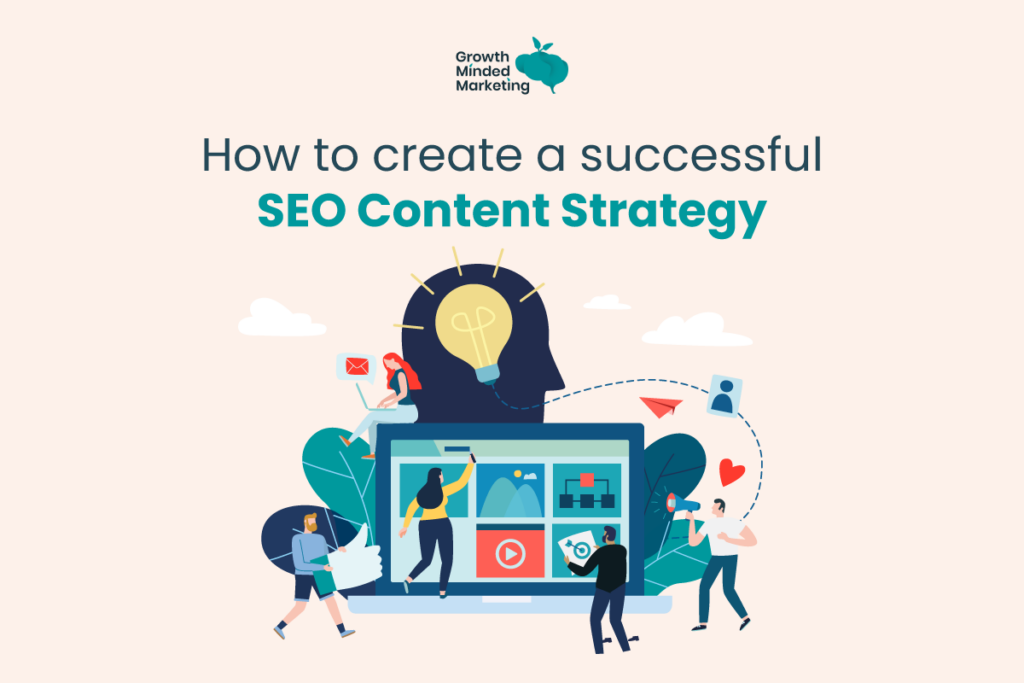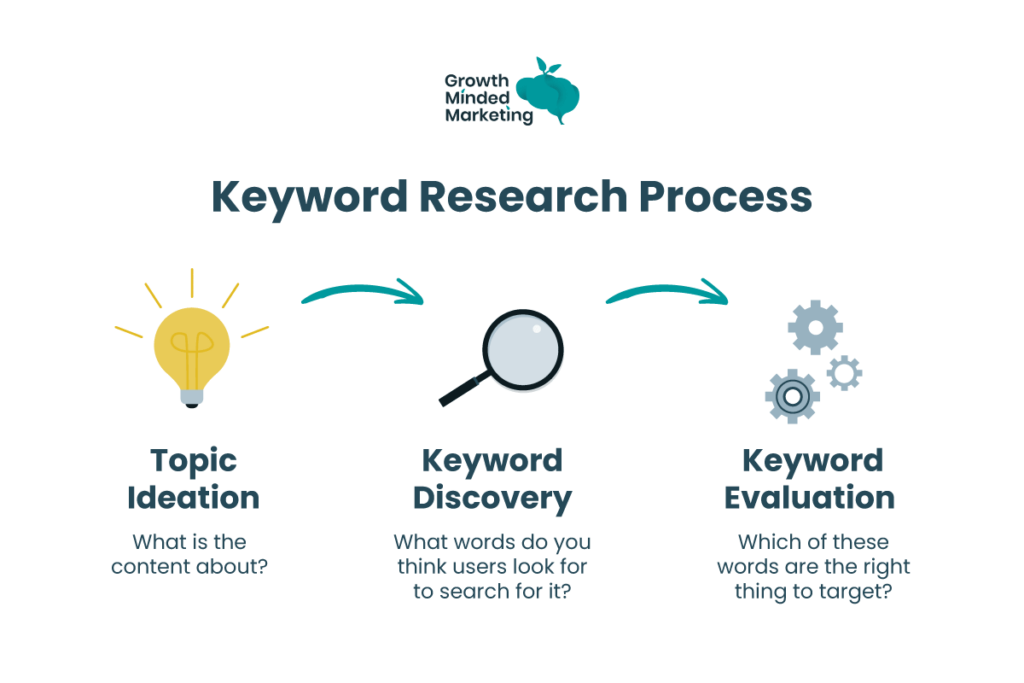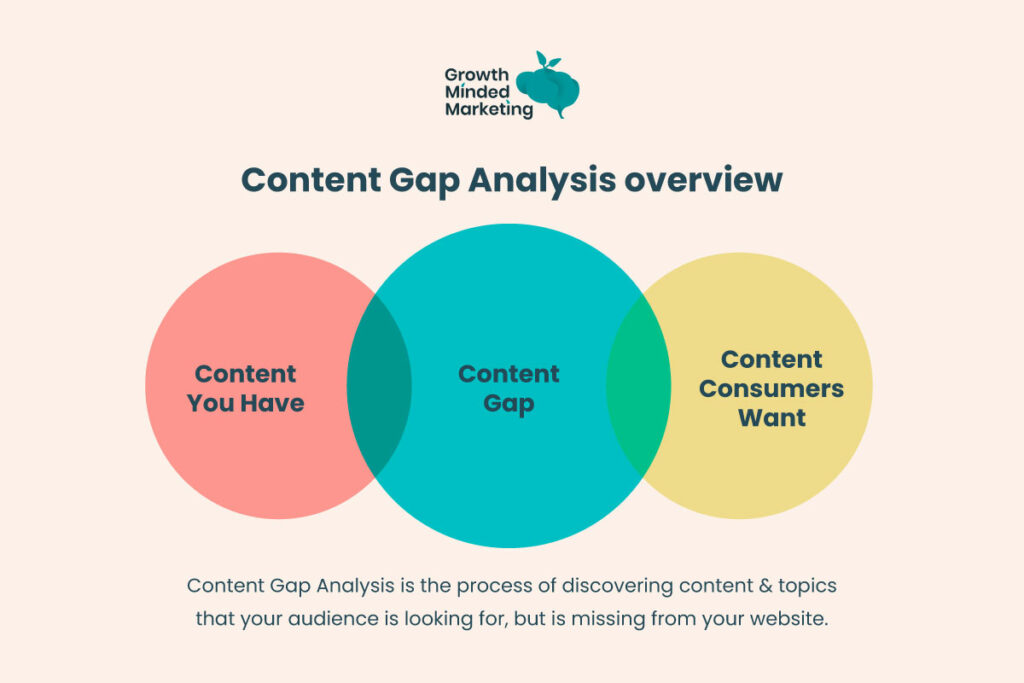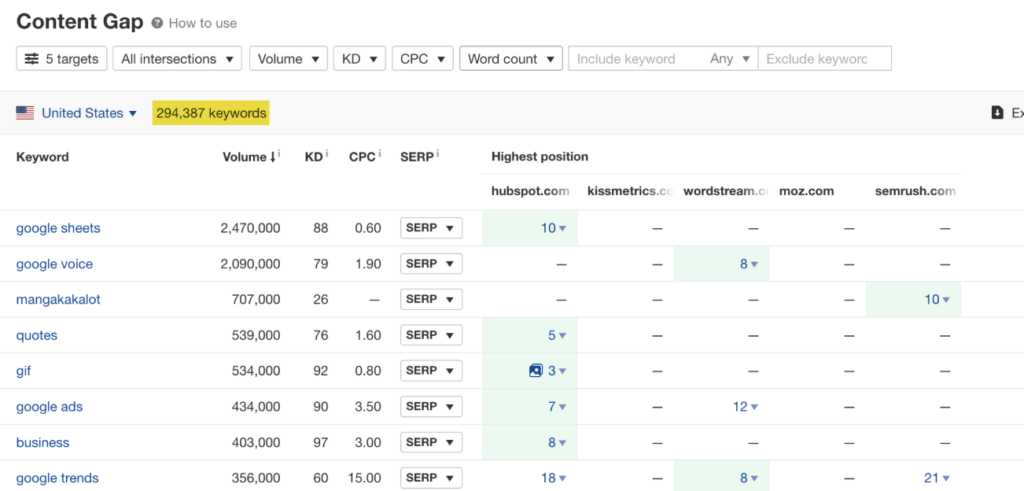Roughly 68% of online experiences start with a search engine. I think you’ll agree that this is a good enough reason to consider search engine optimisation (SEO) to grow your businesses organic presence!
And an SEO content strategy is the starting point for kick starting your organic growth…
This in-depth guide covers everything you need to know to create your SEO content strategy from scratch. Let’s dive in!
Table of Contents
ToggleWhat is an SEO Content Strategy?
SEO content strategy is a systematic process of auditing, organising, creating, and optimising content to improve search engine ranking and organic traffic.
It’s the strategy that covers end-to-end content production and optimisation to drive more traffic from search engines and meet content goals.
Your content marketing strategy includes keyword analysis, editorial calendar, content planning, content creation and optimisation, and regular monitoring.
A survey from Hubspot revealed that 82% of businesses use and spend resources actively on content marketing.
Another survey reported that 73% of B2B marketers and 70% of B2C marketers use SEO content as part of their overall marketing strategy.
Businesses of all sizes invest in content to reach their target audience through search engines as the majority of people start their online journey through their favourite search engine.
And to rank high in SERPs, you have to make sure you are producing high-quality content for your ideal customers.
Why is having an SEO content strategy important?
So, what makes SEO content strategy important for your business?
Here’s how having a robust content marketing strategy will help your business:
1. Clarity
Strategy has a clear objective and plan of action that ensures clarity across your teams. The content team knows what they are supposed to do, when they should do it, and who has to do it.
For example, the editorial calendar lists all the content pieces that are to be published that look like this:
An editorial calendar is an outcome of a content marketing strategy that makes content production and management a streamlined and hassle-free process.
2. Resource management
SEO content strategy helps you manage resources smartly and effectively. Since it clearly defines content marketing goals, you can allocate the right resources to your content marketing team to achieve its target.
For example, the content team requests to have a designer for the creation of custom content graphics and they also ask to provide them with SEO tools.
When you get a list of the resources that your content team needs, you have to prioritise it and see what matters the most for achieving content and SEO goals.
Do you really have to hire a full-time designer or will a design tool like Canva will work?
Making these types of decisions gets easier when there’s a clearly defined content marketing strategy. Link every resource to the goal and figure out how crucial it is for your team.
3. Budgeting
Content marketing is a subset of your overall marketing strategy. You have to allocate a certain budget from your marketing budget to SEO content marketing and this can be best done when you have a strategy in place.
You can set an appropriate budget for content marketing based on forecasted outcomes and performance.
4. Tracking
Tracking the performance of the content marketing efforts is only possible when you have a strategy.
Why?
Because strategy defines the goal you can then set relevant KPIs and use appropriate metrics to track and measure content performance.
For example, if the goal of your content strategy was to generate 100 leads from organic traffic in 50 days, you can easily measure performance via your analytics tool.
5. Integration
Content strategy is related to your SEO strategy, and it strengthens SEO. Imagine improving your site’s ranking in SERPs without content, it will get quite tough, right?
This is why having a content strategy is essential. It integrates with your SEO strategy and this creates synergy.
How to Create an SEO Content Strategy in 7 Steps
Follow these steps to develop a content marketing strategy for your business:
Step 1: Set your goals and KPIs
Setting a clear goal is the first step. It defines the purpose of your strategy and answers what and why.
You can use the SMART goal technique to set clear and specific goals. A SMART goal is specific, measurable, achievable, relevant, and time-bound.
Here’s an example of a SMART content strategy goal: “To increase organic traffic by 100% in 6 months.”
This goal is specific (it can be measured) and is quite achievable as increasing organic traffic by 100% in 6 months isn’t impossible.
Moreover, it’s relevant to the business as more qualified traffic means more sales and leads, and has a specific time duration attached to it.
With this type of clearly defined objective for your SEO content strategy, you can identify relevant KPIs. In this case, you can use KPIs like organic traffic, new organic traffic, organic traffic on desktop / mobile / tablet, organic clicks by queries and pages, organic impressions – the list goes on!
Setting goals and relevant KPIs helps you measure content performance and help you make well-informed data-driven decisions to tweak your SEO content strategy.
Step 2: Identify your audience
Identifying your ideal customers improves targeting and helps in offering a consistent UX across all touchpoints.
A clear understanding of your audience ensures that the content you publish is relevant to their interests. This calls for creating (or updating) buyer personas.
A buyer persona (or marketing persona) is a fictional representation of your ideal customer and it contains all the key information about your target audience including interests, demographics, pain points, challenges, etc.
Detailed buyer persona requires a lot of information, most of which is not available freely and can require primary data collection through surveys and interviews.
The more accurate your buyer persona is, the better it is as it will improve the effectiveness of your SEO content strategy since you can add relevant information to the persona such as:
- The type of content your audience prefers
- What platforms do they use to find content online
- What websites and social platforms do they use to look for relevant content
- How do they find answers to key questions (relevant to your product)?
Having detailed buyer personas for each target group will make it extremely easy to create and distribute content that your audience craves.
Step 3: Keyword research
SEO content strategy is incomplete without proper keyword research. You have to find relevant topics and keywords to write about so that your audience can find you through search engines.
Keyword research is the process of finding, analysing, and organising search terms that people use in search engines to find what they are looking for.
Generally, you will find tons of keywords based on a general topic idea but you can’t (and shouldn’t) target all of them.
Each keyword needs to be analysed individually based on multiple factors including:
- Search volume
- Competitiveness
- Relevance to business, product, marketing strategy, and content marketing strategy
- Traffic potential
- Relationship with the goal
The keywords you choose should be:
- Relevant to your SEO content strategy goal (refer to Step 1)
- Consistent with at least one buyer persona
These two conditions must be fulfilled for all the keywords you finalise. Any keyword that does not align with your goal or help you achieve it is useless even if your audience uses it.
Your target should be to address keywords that help you achieve your content objectives.
There are two primary ways to find and refine keywords for your content strategy:
- Use a keyword research tool: Finding keywords manually isn’t a smart choice. You should use a keyword research tool like Ahrefs or SemRush, or the Google Ads keyword planner.Tools like Ahrefs, Semrush, and others come with a monthly subscription, but they are quite handy and provide detailed information about keywords for multiple search engines and other platforms like Amazon and YouTube.
The Google Keyword Planner is a free research tool that you can use to find search terms for Google only.
- Competitor analysis: One benefit of using a premium keyword research tool is that it lets you analyse your competition by giving you a complete overview of what keywords their websites ranks for, page-level keyword ranking, estimated traffic based on keyword and page, and much more.
It helps you a lot in identifying relevant, high-traffic keywords.Prepare a list of keywords with relevant metrics like search volume, competitive, and target persona and move to the next step.
Step 4: Content Gap Analysis
Content gap analysis helps you identify opportunities in existing content. It is the process of evaluating content on your blog and identifying gaps in terms of optimisation and improvement.
It requires a detailed audit of existing content that can be done manually or using an SEO tool (like Ahrefs or Semrush).
Ahrefs has a content gap tool that helps you quickly identify content gaps based on what keywords your competitors are ranking for and what keywords you are missing:
You will get a list of keywords that you should target – but you are not currently ranking for or ranking too low.
There are two possible outcomes of content gap analysis:
- You don’t target the identified keyword and it requires new content
- You’re already targeting and ranking for a keyword but the ranking is low, and might require more optimising
For example, content gap analysis revealed two keywords: Keyword 1 and keyword 2.
For keyword 1: Your website doesn’t rank anywhere in SERPs and this is because you are not targeting it yet. This type of keyword needs new content and should be moved to the keyword list prepared in Step 3 (see above).
For keyword 2: You have an existing content piece that’s ranked at position 17 in SERPs for months and it drives zero clicks. You need to improve your existing content and optimise it to improve your ranking for this keyword. Content optimisation is covered in Step 7 (see below).
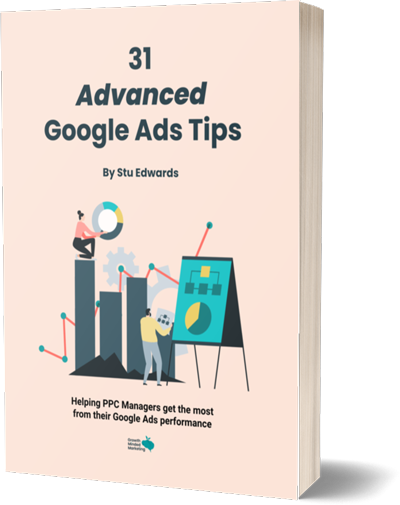
Google Ads tips
Learn advanced tips that PPC professionals use to dramatically increase their Google Ads performance!
Step 5: Content calendar and planning
It’s time to plan content and prepare an editorial content calendar based on the keywords identified in Steps 3 and 4.
An editorial calendar (or content calendar) is a detailed calendar of what, when, and where to publish content.
It contains a list of keywords, relevant titles, content type, publishing platform, publish date, who is to write them, editor and proofreader, designer, and other details.
Optionally, you can add outlines, content purpose, linking opportunities, marketing channels, etc.
You can add as many details as possible to the content calendar. The more detailed it is, the better – as it streamlines the content creation process.
Here’s an example of a content calendar created in Excel:
Here’s another example created in ClickUp:
You can use a tool or you can create a content calendar in Excel or Google Sheets.
An important part of the editorial calendar is content planning which defines how and what of the content publication process. It includes:
- Content outlines and templates
- Converting keywords into topics, subtopics, and pillar pages
- Interlinking strategy
- Task assignment
- What type and format of content to produce
- Publication frequency
- Content tone, voice, and structuring.
Proper content planning makes the whole process straightforward for your team.
Step 6: Creating content
It’s time to create content (finally!)
The content needs to be helpful for readers and understandable by web crawlers. It should be SEO-friendly because that’s what an SEO content strategy is all about – improving visibility in the SERPs.
This means you have to write content intelligently, that is equally appealing to readers and web crawlers.
Here are some best practices for writing SEO-friendly content:
- Avoid stuffing keywords. This is an old-skool tactic. There isn’t the need to go overboard on the the exact keyword you want to target – keep it natural and use related keywords.
- Understand search intent. The best way is to see what type of content is already ranking on the first page of the SERP. If the results are mainly how-to guides, the search intent is informational. If products and services are ranking on the first page, the search intent is commercial.
- Create content that addresses search intent instead of using your judgement.
- Properly format the content. This includes structuring content through heading tags, using short sentences and paragraphs, using media and graphics, use of bullet points, and having a proper introduction, body, and conclusion.
- Use alt tags for images as it improves UX. People who access your content via screen readers or other devices need alt tags to understand the images that are being used. This is a reason why alt tags should be descriptive and must explain the content of the image so anyone can understand what the image is about without looking at it.
Step 7: Optimising your new and existing content
This is the stage where you have to optimise new and existing content.
Optimisation refers to the techniques used to make it easy for search engines to crawl, index, and rank your websites content.
The main of ‘optimisation’ is to improve content visibility and rankings. This applies to both new and existing content.
The content identified in the content analysis gap stage that wasn’t ranking well needs to be fixed and optimised at this stage, along with any new content pieces created in Step 6 before they are published.
Follow these steps to optimise existing content:
-
- Add new sections when necessary. If the content does not address the keyword explicitly, adding a new section will help
- Update content with new information and data if it is outdated
- Add depth by adding more details about the target keyword to completely cover the topic.
Follow these steps to optimise new content:
-
- Add a target keyword in the title and make sure your title has 51-60 characters to avoid truncating in the SERP
- Add your target keyword in the first paragraph
- Write a short, catchy, clickable meta description that should be between 155-160 characters
- Address search intent preferably in the introduction. This is important for being shown in the featured snippet in the Google SERP.
- Add high-quality visuals and illustrations. Avoid generic stock photos!
- Cover all the aspects of the keyword and topic by answering all the related questions
- Update content regularly for freshness (as discussed in the previous section).

Google Ads tips
Learn advanced tips that PPC professionals use to dramatically increase their Google Ads performance!
Conclusion
SEO content strategy development can seem a challenging and daunting task – but it’s ultimately fruitful when done well.
Time and time again we’ve seen our well-developed content strategies take a business’s organic traffic growth to the next level.
Take Wise for example. They used content marketing to generate more than 6.4 million organic visitors per month.
You can be the next Wise in your market if you create and execute a proper content strategy.
The way you craft content strategy is crucial. A well-thought-out, data-driven, and proven SEO content strategy will do wonders for your organic growth.
Get in contact with us today, and let’s talk about the development of your content strategy.

Find out how our SEO management services can help your business grow in 2024

